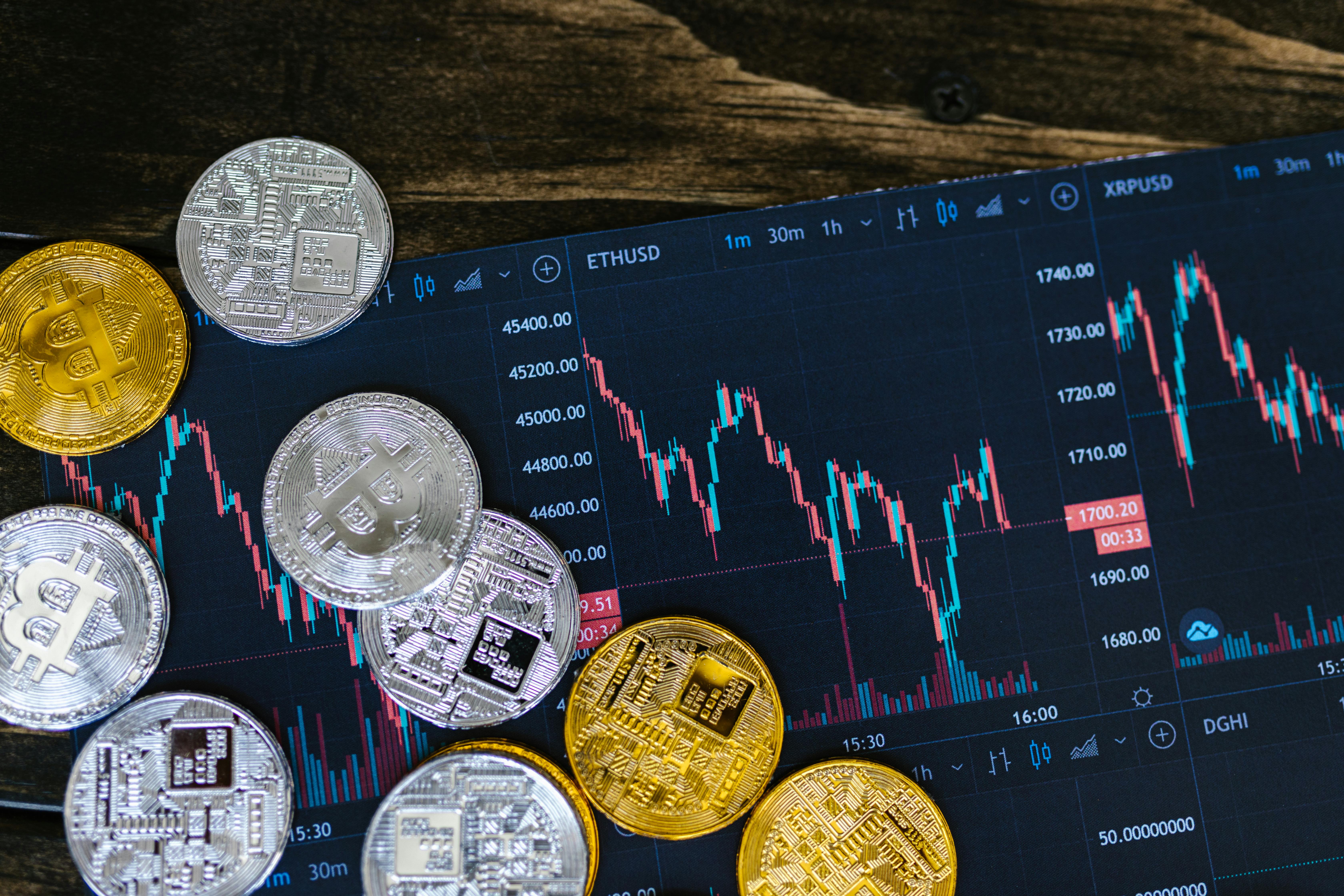In the evolving universe of cryptocurrency, it’s easy to get overwhelmed by all the jargon, unique concepts, and dynamic processes. This article demystifies one such term – “pegging” – that often pops up in crypto discourse. As we discuss pegging in crypto, you might also find answers to your questions related to contexts like cryptocurrency trading, such as where to buy Luna crypto, how to short crypto, or understanding what is APY in crypto. We’ll also explore relevant aspects like crypto staking, and delve into other intriguing topics like the age requirement to invest in crypto or the intriguing concept of a ‘crypto whale’. Gearing up for a foray into crypto? This article is your handy guide.

Understanding Pegging in the Context of Cryptocurrency
Definition and Basic Concept of Pegging
You might have heard about pegging in the context of the foreign exchange market, but what does it mean in the world of cryptocurrencies? Well, pegging in crypto refers to the practice of linking (or pegging) the value of a crypto token to a specific value or benchmark. This could be a traditional fiat currency like the US dollar, another cryptocurrency, a commodity or even an algorthim.
Historical Origins of Pegging in Finance
The concept of pegging may seem new to the cryptocurrency, but it holds a rich history in traditional finance. Pegging evolved as a mechanism to stabilize currencies in relation to others, as seen in the Bretton Woods System, where various global currencies were pegged to the US dollar (which, in turn, was pegged to gold) to encourage stable exchange rates and facilitate international trade.
Application of Pegging in Crypto Markets
In the world of cryptocurrencies, pegging is becoming increasingly popular for similar reasons. You see, while crypto’s volatility can be attractive to traders, not everyone is okay with their digital assets’ prices jumping around. Simply put, if you plan on using a cryptocurrency to pay for your daily coffee, you’d like the value of that currency to remain relatively stable. That’s where pegging comes in, providing a viable solution for stability in the wild world of cryptocurrencies.
Types of Crypto Pegs
Fiat Currency Pegs
As the name suggests, a fiat currency peg is when a crypto token value is linked to the value of a traditional fiat currency. The US dollar is a popular choice, but other currencies like the Euro or even a basket of different currencies can be used.
Cryptocurrency Pegs
Conversely, some cryptocurrencies are pegged to other cryptocurrencies. For example, a token could be pegged to Bitcoin or Ether, allowing that token to share in the stability (or instability) of the more established crypto asset.
Commodity Pegs
Commodity pegs work similarly to fiat pegs, but instead of being linked to a traditional currency, they’re tied to a real-world commodity like gold or oil. These types of pegs form the basis for an emerging class of cryptocurrencies known as “crypto commodities.”
Algorithmic Pegs
Algorithmic pegs, on the other hand, stand a bit apart. Instead of being linked to a physical asset, these are pegged by an algorithm. They automatically adjust the supply of the cryptocurrency based on its demand, aiming to maintain a stable price.

Stablecoins: The Most Common Pegged Crypto
Understanding Stablecoins
Stablecoins have quickly become the most common type of pegged cryptocurrencies. As their name implies, these tokens aim to present a stable value, most often pegged to a particular fiat currency.
Examples of Popular Stablecoins
Some of the most widely recognized stablecoins include Tether (USDT), pegged 1:1 with the US dollar, and DAI, which is pegged to the US dollar but is backed by collateralized crypto assets rather than real dollars.
How Stablecoins Maintain Their Peg
Unlike other cryptocurrencies, which can be wildly volatile, stablecoins use different methods to keep their value pegged, such as collateralization, algorithmic mechanisms, or holding reserves of the pegged asset (often verified by regular audits).
Pegging Mechanisms
Collateralization
Collateralization involves holding a reserve of assets to back the value of a cryptocurrency. This reserve can consist of various assets, such as other cryptocurrencies or fiat currencies.
Algorithmic Stabilization
Algorithmic stabilization achieves peg stability through software algorithms that automatically adjust the supply of the cryptocurrency in response to changes in demand, maintaining a constant value.
Reserve Backing
Reserve backing is a method where the cryptocurrency issuer maintains holdings of a reserve asset (like US dollars) to back the pegged cryptocurrency. This reserve can be audited to validate its existence and ensure trust.

Benefits of Pegged Cryptocurrencies
Reduced Volatility
One significant advantage of pegged cryptocurrencies is their reduced volatility. By keeping the asset’s value more stable, pegged cryptocurrencies can be more practical for everyday transactions and could also be less risky for investments compared to other cryptocurrencies.
Enhanced Trust and Predictability
Having a pegged value also means enhanced trust and predictability. You know how much your asset is worth and can make decisions accordingly, reducing the anxiety and uncertainty that can come with drastic price swings in the crypto market.
Facilitation of Trade and Payments
By taking the edge off volatility, pegged cryptocurrencies greatly facilitate trading and payments. With a predictable value, they can serve as a reliable medium of exchange, unit of account, and store of value, unlocking the potential of cryptocurrencies for everyday use.
Challenges and Risks of Pegging
Maintaining the Peg
Despite their benefits, pegged cryptocurrencies aren’t flawless. One of the main challenges is maintaining the peg. If the collateral or reserve is inadequate, or if the market loses trust in the peg, it can break, leading to significant price instability.
Black Swan Events and De-pegging
Pegged cryptocurrencies aren’t immune to sudden market shocks or “black swan” events. In such instances, the peg can fail, leading to drastic price changes. This is known as “de-pegging.”
Regulatory and Compliance Issues
Lastly, pegged cryptocurrencies need to navigate a maze of regulatory and compliance issues. Due to their proximity to traditional financial systems, they often face more scrutiny and regulatory challenges.

Pegged Tokens in Decentralized Finance (DeFi)
Role of Pegged Tokens in DeFi
DeFi, or decentralized finance, is another sector where pegged tokens play a crucial role. By providing stable value, pegged tokens can serve as the backbone for various financial products and services, from loans and savings accounts to insurance and prediction markets.
Pegging and DeFi Protocols
Different DeFI protocols use pegging strategies and stablecoins to minimize market risks and volatility. This not only allows these protocols to offer more predictable returns but also greatly facilitates liquidity and encourages broader participation in DeFi ecosystems.
Interest Rates and Peg Stability
DeFI protocols often offer interest rates that can influence the stability of the peg. Higher interest rates might encourage the purchase and use of a pegged token, strengthening the peg, while lower rates might deter usage, putting the peg at risk.
Examples of Pegged Cryptocurrencies in Action
Case Studies of Successful Pegged Tokens
Many pegged cryptocurrencies have proven successful. Case in point, Tether, the most widely used stablecoin, maintains its peg to the US dollar and plays a critical role in crypto trading due to its liquidity and stability.
Analysis of Failed Pegged Cryptocurrencies
However, it hasn’t been smooth sailing for all pegged cryptocurrencies. Some have failed to maintain their peg and capitulated. For instance, the Basis project aimed to maintain a stable price via an algorithmic central bank but eventually collapsed due to regulatory concerns.
Lessons Learned from Past Experiences
These examples underscore the challenges of maintaining a peg and navigating regulation, but also highlight how successful pegging can create vital bridges between traditional finance and the crypto world.
Market Dynamics and the Impact of Pegging
Influence on Crypto Market Liquidity
Pegged cryptocurrencies have a significant bearing on the overall liquidity in the crypto markets. By providing a stable asset for trading, they allow traders to quickly move in and out of positions without having to cash out into fiat currency, fostering deeper and more efficient markets.
Pegging and Market Confidence
Pegged cryptocurrencies can also influence market confidence. A stable and trusted peg can build investor trust in not just the pegged asset but the wider crypto market, encouraging more participation.
Implications for Crypto Adoption and Growth
By offering stability and predictability, pegged cryptocurrencies can also boost the overall adoption and growth of crypto. They help make crypto more relatable and usable for the average person, unpacking new possibilities for blockchain technology beyond speculation and investment.
The Future of Pegging in Crypto
Innovations in Pegging Technologies
Moving forward, we can expect to see further innovations in pegging technology. As DeFi and crypto continue to evolve, so will the mechanisms to maintain stable values.
Potential Regulation Changes Affecting Pegged Tokens
Likewise, the regulatory landscape will also undoubtedly shift. Governments and regulatory bodies worldwide are closely eyeing how pegged tokens work, and new regulations might shape the future of these financial instruments.
Predictions for Pegged Cryptocurrencies
Despite challenges, the future looks bright for pegged cryptocurrencies. Their ability to combine the best qualities of traditional finance and crypto – stability and innovation, trust and decentralization, familiarity and novelty – make them a vital component of the financial landscape of tomorrow.
